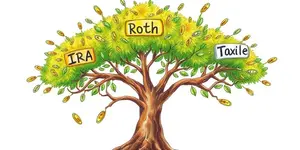
Investing is as much about managing losses as it is about capturing gains. By paying close attention to declines in portfolio value, investors can build stronger, more resilient strategies that stand the test of market turbulence.
A drawdown measures the peak-to-trough percentage decline in an investment or portfolio over time. Rather than simply looking at gains and losses, drawdowns capture the journey from a high-water mark down to the lowest point before recovery.
Unlike single-period losses, drawdowns reveal cumulative declines, offering a more holistic view of downside exposure. By tracking drawdowns, investors gain insight into downside risk and volatility that standard deviation alone cannot provide.
This perspective is vital for anyone seeking to navigate choppy markets. A well-informed investor who monitors drawdowns can make more disciplined decisions, avoid panic selling, and stay focused on long-term objectives.
Computing a drawdown involves a straightforward formula:
Drawdown = (Peak Value – Trough Value) ÷ Peak Value × 100%
For example, if a portfolio peaks at $50,000 and falls to $40,000 before recovering, the drawdown is (50,000 – 40,000) ÷ 50,000 × 100% = 20%.
Consider these real-world illustrations in the table below:
These figures highlight that drawdowns can vary dramatically across markets and time frames. They underscore the importance of understanding the full extent of potential losses before committing capital.
Experiencing a significant drawdown can trigger stress, regret, and impulsive decisions. Many investors abandon strategies at the worst possible moment, turning paper losses into permanent setbacks.
Maintaining behavioral discipline during downturns is essential. By preparing mentally for possible declines, you can avoid the emotional traps that lead to mistimed market exits and missed recoveries.
Consider the story of Ava, a long-term investor who faced a 30% drawdown during the 2008 financial crisis. Rather than selling in panic, she held her positions and monthly contributions continued. Within five years, her portfolio not only recovered but grew 50% above its previous peak.
Ava’s experience demonstrates that understanding drawdowns fosters the confidence to stay invested through challenging periods, ultimately benefiting long-term returns.
Effective risk management relies on a mix of approaches designed to cushion portfolios against severe declines. By employing protective measures to mitigate losses, investors can smooth returns and build resilience.
These tactics help maintain a robust risk management framework that adapts to market dynamics. By combining multiple measures, investors create overlapping layers of protection.
Beyond simple drawdown calculations, advanced tools enrich your understanding of downside risk. The Ulcer Index, for instance, quantifies the depth and duration of drawdowns, offering a single metric that tracks stress on a portfolio over time.
Another critical metric is industry-standard risk-adjusted performance ratios, which contextualize returns relative to drawdown severity. Examples include:
By examining these metrics, investors can compare strategies and funds on an apples-to-apples basis, identifying those that deliver consistent returns with appropriate risk-adjusted performance.
Monitoring drawdowns is not just a technical exercise—it’s a mindset shift. Embracing the reality of market declines prepares you to remain focused on long-term goals rather than short-term fluctuations.
Begin by defining a maximum acceptable drawdown. For many, tolerating a 10% to 15% decline may align with financial objectives and psychological comfort. Once this parameter is set, tailor your strategy and position sizes accordingly.
Keep a drawdown journal to record emotions, thoughts, and actions at each trough. This practice builds self-awareness and strengthens your ability to respond rationally when future declines occur.
Drawdowns are an inevitable part of investing. Yet, by proactively measuring, analyzing, and managing these declines, you transform a potential weakness into a strategic advantage.
As you integrate drawdown monitoring into your approach, you’ll cultivate greater resilience, stay committed during market stress, and ultimately achieve more consistent outcomes. Let drawdowns be your guiding metric rather than your stumbling block—empowering you to navigate volatility with confidence and calm.
References













